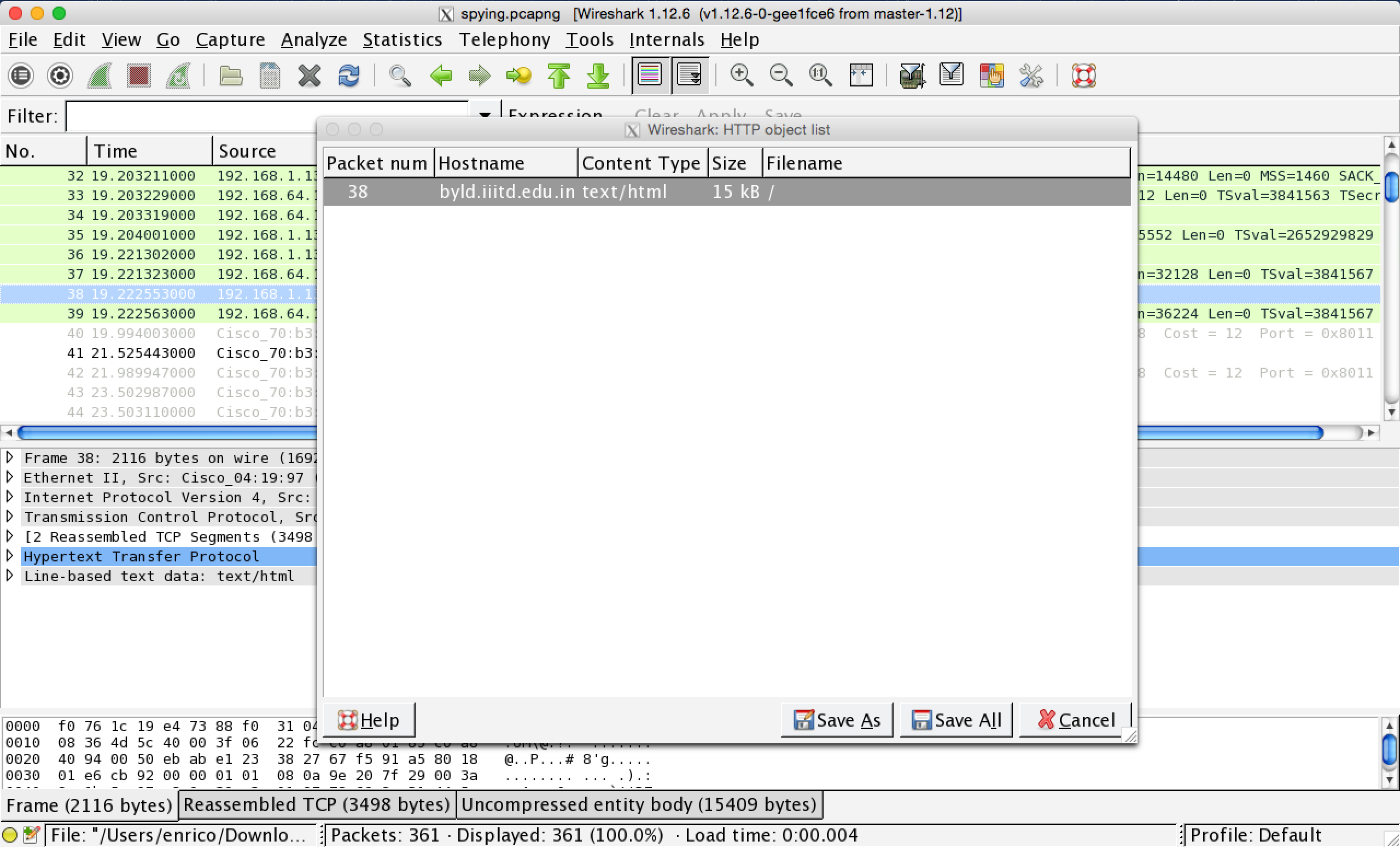Hackcon2015: Watch Me Surf The Internet
Category: forensics - Points: 100
Description: Get the flag from the pcap file in the directory.
We are provided the file spying.pcapng.gz. Let’s first check if the extension is correct:
$ file spying.pcapng.gz
spying.pcapng.gz: gzip compressed data, from UnixOk, it seeems so, we can proceed to extract it:
$ gzip -dv spying.pcapng.gz
spying.pcapng.gz: 40.5% -- replaced with spying.pcapngThe spying.pcapng uses the new pcap format, and can be analysed with Wireshark.
As always we first blindly extract the HTTP files from the pcap.

There is only one resource, the page byld.iiitd.edu.in. We compared the extracted page with the online one, but they resulted in being the same.
Then we started analyzing the other packets. There are a lot of HTTPS connections to google and facebook, so we thought about a crypto challenge.

But the organizers gave the hint:
Try not to get lost in SSL packets. The level doesn’t expect you to read SSL packets in any way.
At last we noted something strange. Multiple packets had some strange slightly-over-10000 source ports. Some of the ports were also duplicated.

They were all directed to the ip address 192.168.64.22 so we used that as filter and write down the source ports:
10102 10108 10052 10054 10058 10032 10073 10074 10117 10115 10116 10077 10097 10100 10101 10089 10111 10117 10087 10097 10116 10099 10104 10077 10101 10083 10117 10114 10102 10084 10104 10101 10073 10110 10116 10101 10114 10110 10101 10116
As suspected, they are all slightly over 10000. If we subtract 10000 from each number we end up with a list of values in ASCII range:
102 108 52 54 58 32 73 74 117 115 116 77 97 100 101 89 111 117 87 97 116 99 104 77 101 83 117 114 102 84 104 101 73 110 116 101 114 110 101 116
Converting them into ASCII we obtain the flag:
fl46: IJustMadeYouWatchMeSurfTheInternet
We can use tshark and python to solve this programmatically. First we read the spying.pcapng file using tshark filtering on the ip destination and extracting the source port:
tshark -r spying.pcapng -Y 'ip.dst == 192.168.64.22' -T fields -e tcp.srcport
Then we can pipe the result into python to do the math and print the string:
... | python -c 'import sys; print "".join(chr(int(port) - 10000) for port in sys.stdin.readlines())'